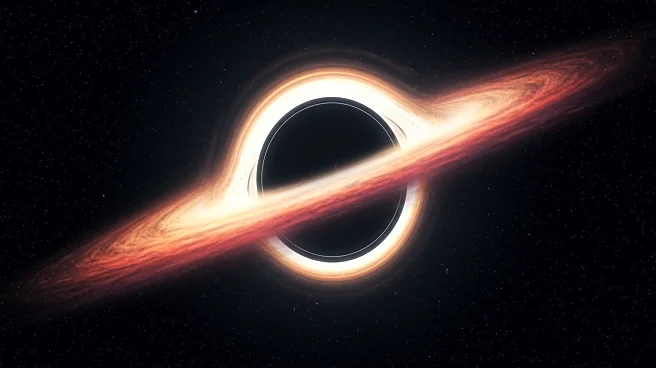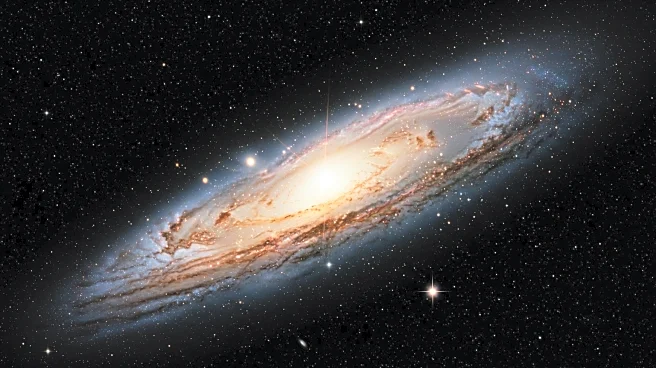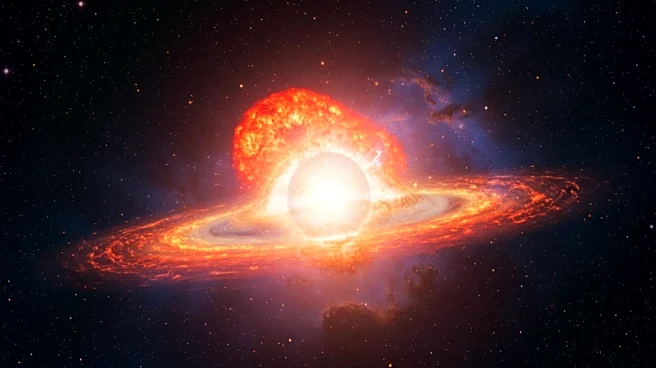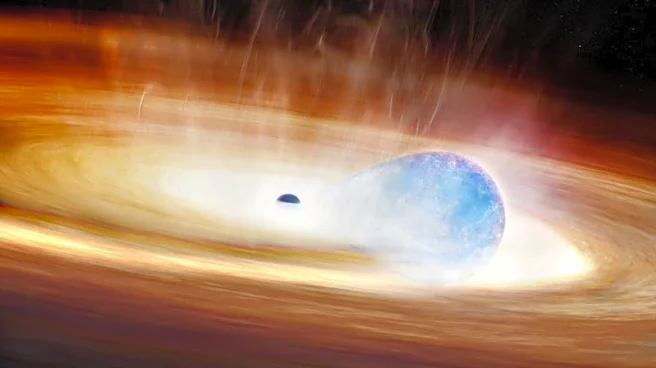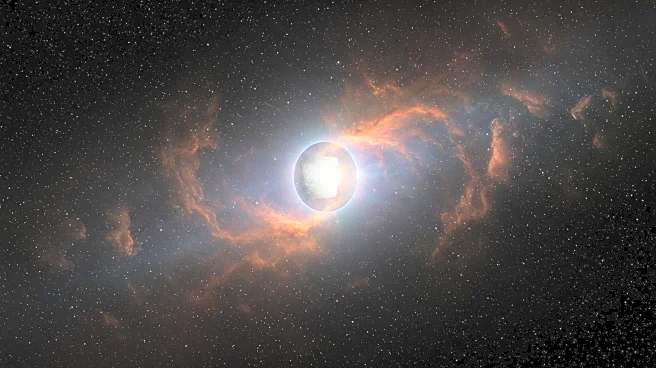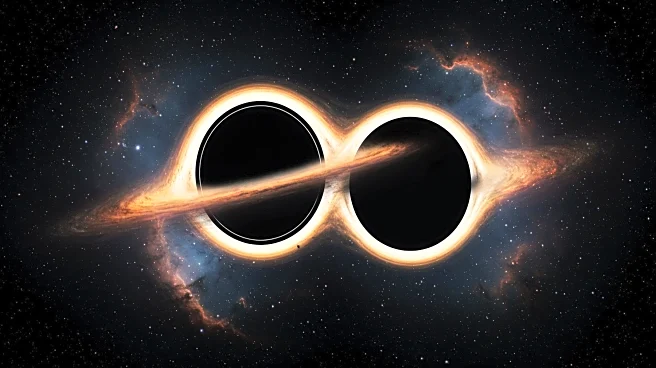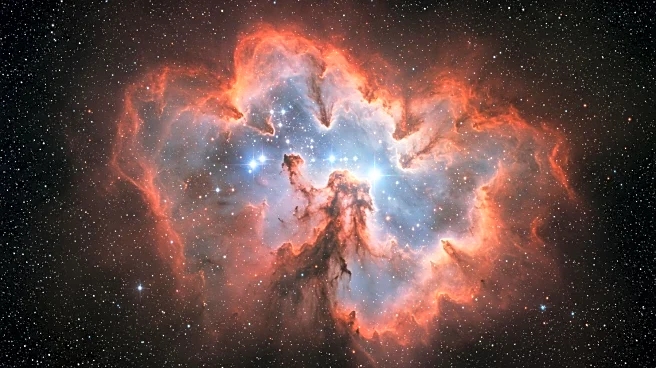Rapid Read • 7 min read
Astronomers have identified a new type of supernova, SN 2023zkd, which appears to have been triggered by the interaction between a massive star and a black hole. The discovery was made by a team from the Center for Astrophysics | Harvard & Smithsonian and MIT, as part of the Young Supernova Experiment. The supernova was first detected in July 2023 by the Zwicky Transient Facility, aided by an AI algorithm designed to identify unusual cosmic events. Observations revealed that the star was in a close orbit with the black hole, leading to gravitational stress that caused the star to explode. The event was characterized by a re-brightening phase, attributed to collisions between the stellar explosion and material from previous interactions.
AD
This discovery provides significant insights into the dynamics of massive stars and their interactions with black holes. Understanding these interactions is crucial for astrophysics, as it sheds light on the life cycles of stars and the formation of black holes. The use of AI in detecting such events marks a technological advancement in astronomy, allowing for real-time identification and study of rare cosmic phenomena. This could lead to more discoveries and a deeper understanding of stellar evolution, potentially impacting theories about the universe's structure and behavior.
The Young Supernova Experiment will continue to leverage AI and powerful observatories to identify and study supernovae shortly after their explosion. With the upcoming Vera C. Rubin Observatory set to survey the sky frequently, astronomers anticipate uncovering more complex stellar explosions. This ongoing research will help map the interactions between massive stars and their companions, providing a clearer picture of stellar life cycles.
AD
More Stories You Might Enjoy
